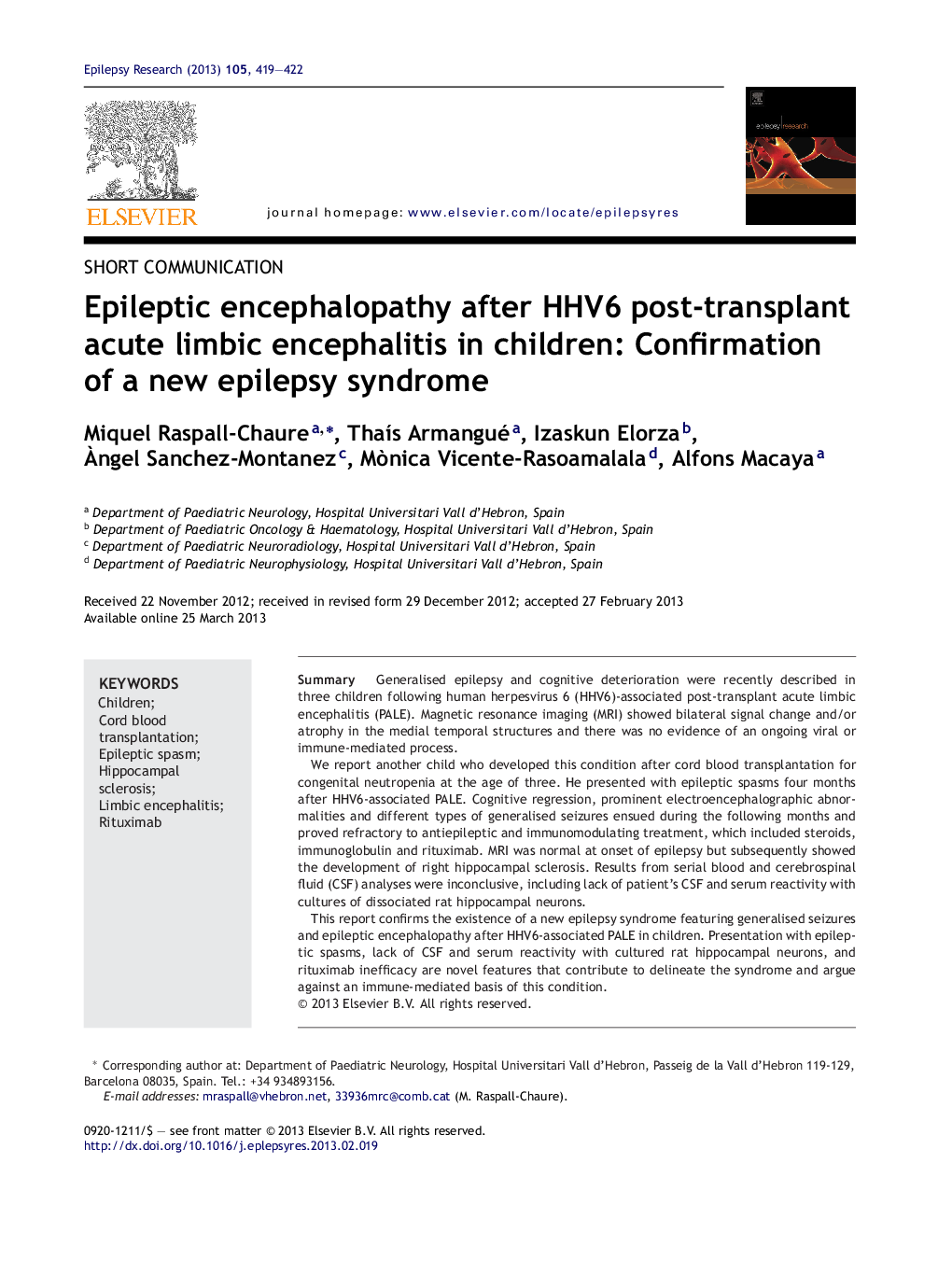| Article ID | Journal | Published Year | Pages | File Type |
|---|---|---|---|---|
| 6015912 | Epilepsy Research | 2013 | 4 Pages |
â¢We confirm the existence of a new epilepsy syndrome after HHV6-PALE in children.â¢It may present with epileptic encephalopathy featuring epileptic spasms.â¢Bilateral temporal lobe involvement may not be evident on MRI in the short-term.â¢Clinical manifestations are refractory to rituximab and other immunomodulating agents.â¢Further evidence arguing against an immune-mediated basis is provided.
SummaryGeneralised epilepsy and cognitive deterioration were recently described in three children following human herpesvirus 6 (HHV6)-associated post-transplant acute limbic encephalitis (PALE). Magnetic resonance imaging (MRI) showed bilateral signal change and/or atrophy in the medial temporal structures and there was no evidence of an ongoing viral or immune-mediated process.We report another child who developed this condition after cord blood transplantation for congenital neutropenia at the age of three. He presented with epileptic spasms four months after HHV6-associated PALE. Cognitive regression, prominent electroencephalographic abnormalities and different types of generalised seizures ensued during the following months and proved refractory to antiepileptic and immunomodulating treatment, which included steroids, immunoglobulin and rituximab. MRI was normal at onset of epilepsy but subsequently showed the development of right hippocampal sclerosis. Results from serial blood and cerebrospinal fluid (CSF) analyses were inconclusive, including lack of patient's CSF and serum reactivity with cultures of dissociated rat hippocampal neurons.This report confirms the existence of a new epilepsy syndrome featuring generalised seizures and epileptic encephalopathy after HHV6-associated PALE in children. Presentation with epileptic spasms, lack of CSF and serum reactivity with cultured rat hippocampal neurons, and rituximab inefficacy are novel features that contribute to delineate the syndrome and argue against an immune-mediated basis of this condition.
